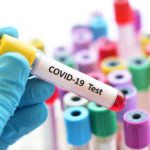
Ovarian Cancer Awareness Month 2025
Understanding Ovarian Cancer and Its Challenges
Ovarian cancer occurs when abnormal cells in the ovary, fallopian tube or peritoneum begin to grow and divide in an uncontrolled way. They eventually form a growth (tumour). If not caught early, cancer cells gradually grow into the surrounding tissues. And may spread to other areas of the body. (Cancer Research UK, 2025)
Unfortunately, this type of cancer often develops without clear symptoms in its initial stages, resulting in late diagnosis when treatment options are limited and generally less effective. When symptoms eventually manifest, such as abdominal swelling, pelvic discomfort, and alterations in bowel habits. They are usually non-specific and can easily be mistaken for less severe conditions, complicating early detection (Bast et al., 2009). This contributes to the high mortality rate associated with ovarian cancer, which ranks as the fifth leading cause of cancer-related deaths in women and is considered the most lethal cancer of the female reproductive system (Siegel et al., 2023).
Early detection is crucial for improving survival rates. If identified in its early stages, while the cancer remains localised to the ovaries, the five-year survival rate can surpass 90%. However, due to the absence of specific symptoms and reliable screening methods, only about 20% of ovarian cancers are diagnosed at this stage (American Cancer Society, 2023). As the disease advances without noticeable signs, many cases remain undetected until they reach later stages, where it may have metastasised to other body parts, significantly diminishes the likelihood of successful treatment.
Currently, diagnostic methods for ovarian cancer rely on imaging techniques like ultrasound and CT scans, along with blood tests that measure CA-125 levels, a protein that may be elevated in patients with ovarian cancer. While these tools can be beneficial, they have their limitations. For instance, CA-125 levels can also be raised in benign conditions such as endometriosis or fibroids, resulting in false positives. Similarly, imaging techniques might overlook small tumours or misinterpret benign cysts as malignant (Jacobs et al., 2016). These challenges highlight the need for more accurate and sensitive diagnostic methods that can enhance early detection and patient outcomes. The medical community continues to explore innovative solutions promising earlier and more precise diagnoses, ultimately improving treatment effectiveness.
The Role of IVD Diagnostics in Ovarian Cancer Detection
In vitro diagnostic (IVD) technologies are increasingly becoming pivotal in the early detection and management of ovarian cancer. These diagnostic tools analyse samples from the body—such as blood, urine, or tissue—to identify diseases and conditions. In the context of ovarian cancer, IVD diagnostics offer valuable insights into the disease’s presence and characteristics through various advanced techniques, including biomarker analysis, genetic testing, and molecular diagnostics.
A significant advantage of IVD diagnostics lies in their ability to detect specific biomarkers linked to ovarian cancer. Biomarkers like CA-125 and HE4 (Human Epididymis Protein 4) can be quantified using assays like enzyme-linked immunosorbent assays (ELISA) or multiplex assays, which allow for the simultaneous detection of multiple markers. These tests can provide more detailed information than conventional methods, potentially differentiating between benign and malignant conditions with greater accuracy (Moore et al., 2010). Additionally, genetic testing enables the identification of mutations in genes such as BRCA1 and BRCA2, which elevate the risk of ovarian cancer. This facilitates tailored surveillance and preventive measures for individuals at higher risk.
Molecular diagnostics constitute another critical component of IVD technology, particularly in understanding the genetic and epigenetic changes frequently observed in ovarian cancer. Techniques like polymerase chain reaction (PCR) and next-generation sequencing (NGS) enable an in-depth analysis of DNA and RNA from tumour samples. These methods help identify mutations or gene expression patterns associated with different ovarian cancer subtypes, facilitating more precise diagnoses and the selection of targeted therapies (Cancer Genome Atlas Research Network, 2011).
Moreover, integrating artificial intelligence (AI) with IVD diagnostics is enhancing diagnostic capabilities. AI algorithms can process vast amounts of data from IVD tests, recognising complex patterns that human analysis might miss. This combination not only improves the sensitivity and specificity of ovarian cancer detection but also expedites the diagnostic process, enabling quicker clinical decision-making (Topol, 2019).
The impact of these advancements in IVD technology is considerable. By providing more accurate and comprehensive diagnostic information, IVD diagnostics shift the focus from late-stage intervention to early-stage prevention and treatment, which is essential for improving survival rates and quality of life. Early-stage ovarian cancer is far more treatable than advanced-stage disease. As research progresses, the role of IVD diagnostics is expected to become even more central in oncology, offering hope for improved outcomes in the battle against ovarian cancer.
Advantages of IVD Diagnostics Over Traditional Methods
Traditional ovarian cancer diagnostic methods, such as ultrasounds and CA-125 blood tests, though fundamental, possess several limitations that can impede accurate and timely diagnosis. Ultrasound imaging, despite being valuable, may not always distinguish between benign and malignant ovarian masses, leading to unnecessary surgeries or missed diagnoses of cancer. Likewise, CA-125 levels can be elevated in non-cancerous conditions like endometriosis or fibroids, causing false positives (Jacobs et al., 2016).
IVD diagnostics offer distinct advantages in addressing these challenges. One major benefit is the increased sensitivity and specificity of IVD technologies. For example, multi-marker panels in IVD diagnostics can simultaneously evaluate various biomarkers, offering a more comprehensive view of the disease. This approach reduces the likelihood of both false positives and false negatives, significantly improving diagnostic accuracy (Moore et al., 2010). Furthermore, liquid biopsies—an IVD technique—enable the non-invasive detection of circulating tumour DNA in blood samples. This method not only makes monitoring easier and more frequent but also detects minimal residual disease after treatment, which is vital for managing recurrence risks (Bettegowda et al., 2014).
IVD diagnostics also facilitate personalised treatment approaches. By conducting detailed genetic analyses, IVD tools can pinpoint specific mutations driving an individual’s cancer, guiding the selection of targeted therapies. This precision minimises exposure to ineffective treatments, which can be emotionally and financially draining for patients (Cancer Genome Atlas Research Network, 2011).
The transition from traditional diagnostic methods to advanced IVD technologies marks a significant advancement in the fight against ovarian cancer. These innovations promise not only more reliable and timely diagnoses but also pave the way for personalised and effective treatment strategies, highlighting the transformative potential of IVD diagnostics in oncology.
Conclusion: The Future of IVD Diagnostics in Transforming Ovarian Cancer Care
In conclusion, in vitro diagnostic (IVD) technologies hold immense promise for transforming the detection and management of ovarian cancer. Their capacity to deliver highly sensitive and specific results, combined with cutting-edge techniques such as multi-marker panels, liquid biopsies, and AI-driven analytics, addresses many of the shortcomings of traditional diagnostic methods. These advancements not only enhance early detection but also enable personalised treatment strategies, improving patient outcomes and survival rates. As research continues and technology becomes more sophisticated, IVD diagnostics will play an increasingly vital role in revolutionising ovarian cancer care. Future innovations, such as single-cell analysis and novel biomarker discovery, are anticipated to further refine diagnostic accuracy and expand treatment options. As these technologies evolve, IVD diagnostics will increasingly emerge as a key tool in turning ovarian cancer from a silent killer into a manageable condition, ultimately saving lives and improving the quality of life for patients worldwide. View Biorex’s ELISA Cancer Antigen range here.
References
– American Cancer Society. (2023). Cancer Facts & Figures 2023. https://www.cancer.org/content/dam/cancer-org/research/cancer-facts-and-statistics/annual-cancer-facts-and-figures/2023/2023-cancer-facts-and-figures.pdf
– Bast, R. C., Hennessy, B., & Mills, G. B. (2009). The biology of ovarian cancer: New opportunities for translation. Nature Reviews Cancer, 9(6), 415–428.
– Bettegowda, C., Sausen, M., Leary, R. J., Kinde, I., Wang, Y., Agrawal, N., … & Diaz, L. A. (2014). Detection of circulating tumor DNA in early- and late-stage human malignancies. Science Translational Medicine, 6 (224), 224ra24.
– Cancer Genome Atlas Research Network. (2011). Integrated genomic analyses of ovarian carcinoma. Nature, 474 (7353), 609–615.
– Cancer Research UK. (2025). Ovarian cancer. https://www.cancerresearchuk.org/about-cancer/ovarian-cancer
– Jacobs, I.J. et al. (2016) ‘Ovarian cancer screening and mortality in the UK collaborative trial of Ovarian Cancer Screening (UKCTOCS): A randomised controlled trial’, The Lancet, 387(10022), pp. 945–956. doi:10.1016/s0140-6736(15)01224-6.
– Moore, R. G., Brown, A. K., Miller, M. C., Skates, S., Allard, W. J., Verch, T., … & Bast, R. C. (2010). The use of multiple novel tumor biomarkers for the detection of ovarian carcinoma in patients with a pelvic mass. Gynecologic Oncology, 112(2), 402–408.
– Siegel, R. L., Miller, K. D., Fuchs, H. E., & Jemal, A. (2023). Cancer statistics, 2023. CA: A Cancer Journal for Clinicians, 73(1), 7–33.
– Topol, E. J. (2019). High-performance medicine: The convergence of human and artificial intelligence. Nature Medicine, 25 (1), 44–56.






